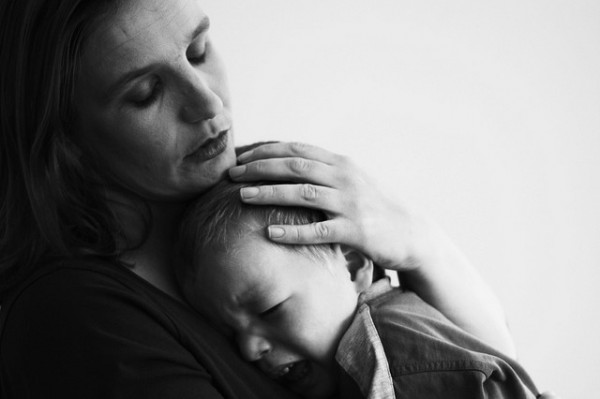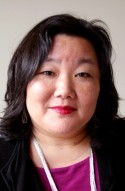
Epidemiologists have found that childhood trauma leaves more than just bad memories. Children who suffer trauma often become adults with physical ailments like heart disease. And trauma can perpetuate trauma. Our states and cities have some programs in place that are intended to intervene in the lives of children to prevent trauma, but what more should we do? This was the question we posed in advance of “Can Childhood Trauma Make Your Sick?“, a Zócalo event.
Only Connect
 Day after day I counsel people who have experienced trauma in their early childhood. They struggle with high anxiety, depression, lack of focus, mood issues, sleeplessness, dissociation from their bodies, and many other symptoms that impair their ability to function in school, jobs, or relationships.
Day after day I counsel people who have experienced trauma in their early childhood. They struggle with high anxiety, depression, lack of focus, mood issues, sleeplessness, dissociation from their bodies, and many other symptoms that impair their ability to function in school, jobs, or relationships.
Their suffering is often solitary. Children who have experienced trauma tend to lose trust in others. They launch into “survival mode” to shield themselves from future pain and regain the control they lost when their trauma made them feel powerless.
Survival mode can be a fantastic mechanism for helping us to endure trauma, but getting out of it can be hard. A heightened state of alert is fueled by a stress hormone called cortisol, and it takes a toll on the body. Medication has its place in tempering some of the stress, but doesn’t come close to the healing power of human connection.
In order to feel trust again and disengage from survival mode, traumatized people must feel safe. Those close to them must be calm, confident, and even-tempered, projecting strength upon which victims can draw to pull through their pain. When my clients trust me enough to disclose their trauma–and their experience is met with compassion and understanding–an overwhelming sense of relief washes over them. I see their anxiety diminish and a sense of calm envelop their bodies.
To be able to understand what a child is trying to communicate is the most satisfying feeling one can have. There is no kid or situation that is hopeless; it is simply a matter of us taking a step back to assess what language is being spoken. Kids and adults from traumatic and dysfunctional childhoods often speak the language of hurt, pain, loss and mistrust. We need to put our preconceptions aside to be receptive to their communication; only then can we truly understand their needs.
Mark Coen is a founder of the Attachment and Trauma Specialists, an agency specializing in the treatment of youth and adults with attachment and trauma-related issues.
————————————-
Create Circles of Support
 Safe, healthy relationships typically beget strong, healthy children and adults. Impaired and insecure relationships beget children and adults with a greater vulnerability to stress and life challenges. Many factors can lead to stress in relationships, including mental illness, poverty, and historical adversity. Trauma may happen in close family relationships (as occurs with child maltreatment and domestic violence), and trauma may also happen in non-familial relationships–or effect non-familial relationships (as occurs with the abused child who acts out and then gets treated punitively by school personnel or the legal system).
Safe, healthy relationships typically beget strong, healthy children and adults. Impaired and insecure relationships beget children and adults with a greater vulnerability to stress and life challenges. Many factors can lead to stress in relationships, including mental illness, poverty, and historical adversity. Trauma may happen in close family relationships (as occurs with child maltreatment and domestic violence), and trauma may also happen in non-familial relationships–or effect non-familial relationships (as occurs with the abused child who acts out and then gets treated punitively by school personnel or the legal system).
The experience of childhood trauma is complex, and no single solution exists. However, a solid start involves an emphasis on building circles of support.
A child must be supported by a strong caregiving system that is in turn supported by a strong community. Childhood trauma is far too large and widespread to be “the problem” of any one group, any one community, or any one service system, and treatment targeted purely toward those already identified as having experienced trauma–while important–will limit the impact we can have on a challenge that cuts across demographic lines.
In the absence of circles of support, those who experience adversity often get further harmed by relationships and institutions that perpetuate that adversity. (Juvenile justice facilities–in which up to 90 percent of the residents have experienced traumatic stress-often do not have the training to reduce the effects of trauma, for instance.) Trauma isolates and divides, and a negative systemic response can exacerbate these effects. But we can counteract that if we increase our capacity, family-wide and community-wide, to create circles of support for the next generation and for those responsible for their care.
Margaret Blaustein, Ph.D. is the Director of Training at the Trauma Center at Justice Resource Institute in Boston, MA, and co-author of the text, “Treating Traumatic Stress in Children and Adolescents: How to Foster Resilience through Attachment, Self-Regulation, and Competency.”
————————————-
Bring in Outside Help
 Those of us who have raised children know what a challenging job it is in the best of circumstances. In the worst of circumstances, many parents fail–or, worse, abuse or neglect their children.
Those of us who have raised children know what a challenging job it is in the best of circumstances. In the worst of circumstances, many parents fail–or, worse, abuse or neglect their children.
In our mobile society, a young family can be cut off from support and information from older and more experienced family members or neighbors. Therefore, making sure that all young families have support and information from other adults concerning child-rearing is important. One of the best programs for preventing childhood trauma is home visitation, in which nurses or well-trained paraprofessionals take information and support to the homes of families with small children. They also look for potential problems such as mental illness, family violence, or substance abuse.
The bottom line is that society needs more adults who are experienced to help younger and less experienced adults and teens. A parent mentor or assistant might be a good idea.
Dr. Kathy Seifert is a psychologist, entrepreneur, and author of How Children Become Violent, Youth Violence, and the CARE-2 Manual. She operates three public mental health clinics.
————————————-
Break the Silence on the Violence Suffered By Women
 The facts are clear: far too many children in our country experience trauma. But equally clear is a silent epidemic of violence against girls and young women. Studies have found that 78 percent to 89 percent of child sexual-abuse victims are female. One third of all young women will experience sexual abuse before they reach the age of 18. Furthermore, 61 percent of all female rape victims are under the age of 18.
The facts are clear: far too many children in our country experience trauma. But equally clear is a silent epidemic of violence against girls and young women. Studies have found that 78 percent to 89 percent of child sexual-abuse victims are female. One third of all young women will experience sexual abuse before they reach the age of 18. Furthermore, 61 percent of all female rape victims are under the age of 18.
We all agree that we must prevent childhood trauma, but too few programs are in place–and even fewer are designed–to meet the specific developmental needs of girls and young women. The key to prevention is breaking the cycle of childhood trauma for girls in their families and communities. This requires more effective programs, services, and supports, but it also means that we must acknowledge the epidemic of abuse and demand support for the survivors. So let’s start simply by breaking the silence.
Jeannette Pai-Espinosa is president of The National Crittenton Foundation.
*Photo courtesy of gemsling.



